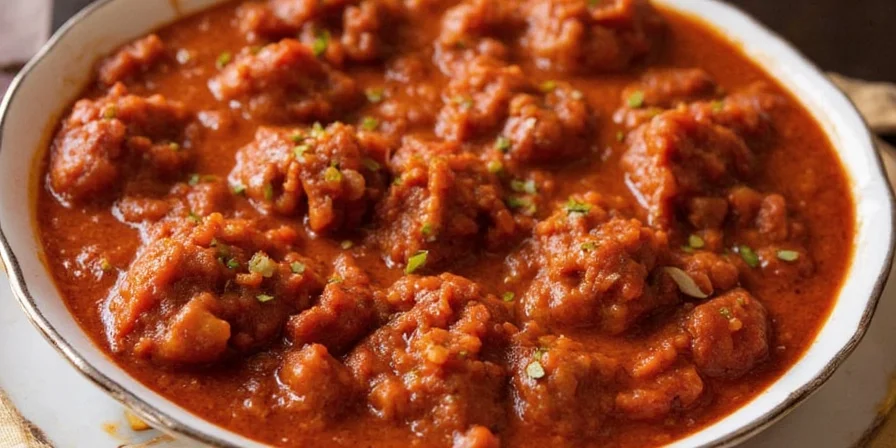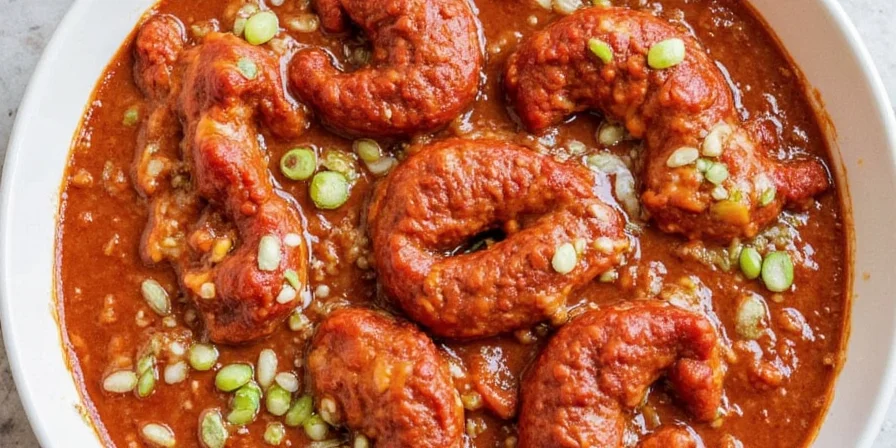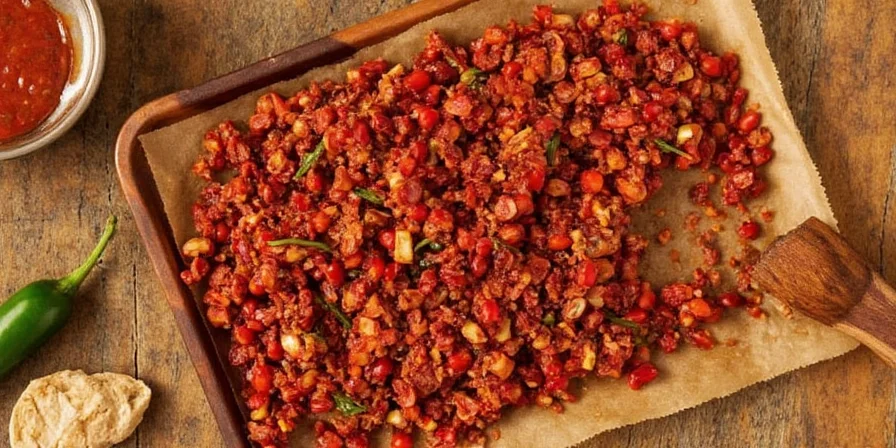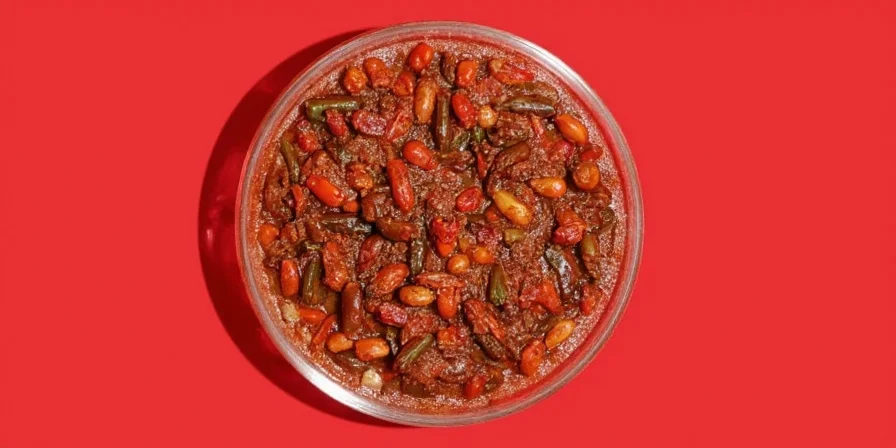7 Smoky Secrets to Level Up Your Chile Chipotle Recipes Game
Welcome, spice enthusiasts and kitchen daredevils! Today we’re diving headfirst into the smoky, spicy, sultry world of Chile Chipotle recipes. Whether you're a pro chef with a collection of rare peppers or a home cook just discovering the magic of chipotles, this guide is your golden ticket to flavor town. Let’s unlock those secrets together — no lab coat required!
What Exactly Is Chile Chipotle?
If you’ve ever taken a bite of something smoky-hot and thought, “Whoa, there’s some serious drama going on in my mouth,” chances are you were dealing with chiles chipotles. But what exactly makes them so special?
| Pepper Type | Heat Level (SHU) | Flavor Profile | Common Use |
|---|---|---|---|
| Jalapeño (Fresh) | 2,500 – 8,000 | Grassy, vegetal | Salsas, nachos, tacos |
| Chipotle (Smoked Jalapeño) | 2,500 – 8,000 | Smoky, earthy, spicy-sweet | Moles, adobos, marinades |
- Origin: Mexico, specifically used by indigenous groups like the Aztecs.
- Drying Process: Fresh jalapeños are dried and smoked over wood fires for days.
- Popularity: Widely used today in global cuisines from BBQ sauces to vegan chili.
Tip #1: Choose Your Chipotle Form Wisely
Not all chipotles come equal. Depending on how they're prepared, their flavor and heat can vary wildly. Here’s a quick cheat sheet to help you navigate the aisle like a pro:
| Type | Pros | Cons | Best For |
|---|---|---|---|
| Whole Dried Chipotles | Potent flavor, customizable texture | Need soaking, prep time | Mojo de ajo, salsas |
| Canned Chipotles in Adobo | Ready-to-use, sauce included | Salt-heavy, may overpower | Stews, soups, dressings |
| Chipotle Powder | Ease of use, blend-friendly | Less depth than whole/smoked | Rubs, dry mixes, spice blends |
Tip #2: Don’t Skip the Soaking Step (Unless You Like It Tough)
So you bought some dried chiles chipotle. Good move! Now resist the urge to throw them straight into your blender. Why? Because unless you want a salsa that doubles as sandpaper, take a few minutes to soak them in warm water.
- Time: 20–30 minutes
- Liquid Options: Water, chicken broth, orange juice (for citrus twist)
- Result: Soft, pliable, and ready to blend into liquid gold
Tip #3: Pair With Sweet or Acidic Ingredients for Balance
Chipotle brings the fire and the smoke, but to make it sing, you need to add some balance. Think of it like dating — too much intensity can be overwhelming without a little sweetness or acidity to keep things interesting.

- Honey: Smooths out the heat and adds caramelized richness
- Lime: Brightens the smokiness and cuts through fattiness
- Tomatoes: Their natural acidity balances heavier dishes
Tip #4: Make Your Own Adobo Sauce — It’s Easier Than You Think
Bored of buying the same old canned chipotles in adobo? Why not make your own version at home? The secret lies in the adobo sauce, which gives that tangy, slightly sweet, and oh-so-complex background flavor.
- Ingredients: Vinegar, garlic, paprika, cumin, oregano, sugar, salt
- Method: Simmer ingredients until thickened, then blend with soaked chipotles
- Storage: Keeps in fridge for up to 2 weeks, freezes well

Tip #5: Know How to Adjust the Heat Without Ruining the Flavor
Here’s a hot truth: sometimes chipotle can be *too* spicy. If you love the flavor but not the face-melting heat, here’s how to tone it down without losing the soul of your dish.
- Seeds & Veins = Spicy: Remove them if you want milder flavor
- Dilution Method: Add more volume (like cream, coconut milk, or broth) to spread the heat thinner
- Add Fat: Cheese, sour cream, avocado — these fats bind capsaicin and reduce the burn
Tip #6: Experiment Beyond Mexican Cuisine
While chipotle has its roots deep in Mexican soil, don’t let tradition box you in. This smoky firecracker plays well in global kitchens. Try adding it to:
- BBQ Rubs: Especially on ribs or brisket
- Curries: A splash of chipotle paste adds intrigue
- Smoothies: Yes, really — a pinch in mango smoothies adds depth
- Chocolate Desserts: Chipotle + dark chocolate = adult-level bliss

Tip #7: Store Your Chipotles Properly for Long-Lasting Flavors
Once opened, canned chipotles can last a while, but only if stored correctly. Here’s how to keep them fresh and potent:
- Refrigerate: Keep them submerged in their adobo sauce in an airtight container for up to 2 weeks
- Freeze: Place individual chipotles in ice cube trays with oil or sauce for easy grab-and-go flavor bombs
- Dry Them Out: Dehydrate leftover chiles and grind into powder for future use

Three Must-Try Chile Chipotle Recipes to Get You Started
1. Chipotle Lime Chicken Tacos
- Shred grilled chicken seasoned with chipotle powder, lime zest, and garlic
- Serve on warm tortillas with slaw, avocado, and a squeeze of lime
- Garnish with cilantro and a drizzle of crema mixed with adobo sauce
2. Smoky Black Bean Soup
- Sauté onions, garlic, and diced chipotle in olive oil
- Add black beans, vegetable broth, cumin, and simmer
- Blend until smooth, top with Greek yogurt and crispy tortilla strips

3. Chipotle Chocolate Mousse
- Melt dark chocolate with a bit of chipotle puree and espresso
- Whip heavy cream and fold into chocolate mixture
- Chill and serve with a sprinkle of smoked paprika
Conclusion
So there you have it — your ultimate roadmap to mastering chile chipotle recipes like a culinary rockstar. From choosing the right form to storing leftovers and spicing up your dessert game, chipotle is a versatile powerhouse that deserves a spot in every adventurous kitchen.
Whether you're building a smoky mole from scratch or jazzing up your morning oatmeal, remember: chipotle isn’t just about the heat. It’s about storytelling through smoke, spice, and soul. Now go forth, experiment boldly, and don't forget to share your creations — preferably with a cold drink nearby 😉











 浙公网安备
33010002000092号
浙公网安备
33010002000092号 浙B2-20120091-4
浙B2-20120091-4